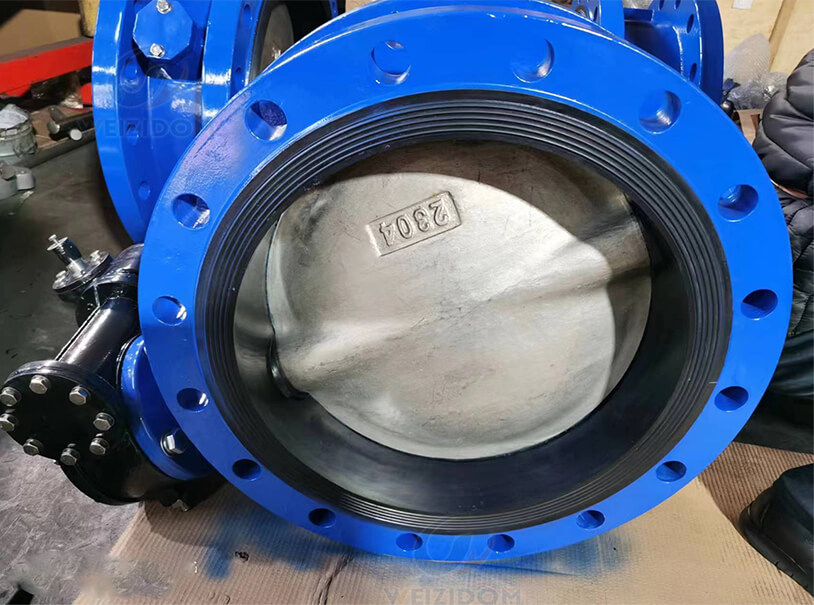Case
Home / Case / Experience / How to choose flange butterfly valve?

Case

Flange butterfly valve is mainly used in industrial production pipelines. Its main function is to cut off the flow of media in the pipeline or adjust the flow rate of the medium in the pipeline.
Flange-type butterfly valves are particularly suitable for large-diameter valves. They are widely used in the field of large-diameter adjustment. When the flange-type butterfly valve is fully opened, the flow resistance is small. When the opening angle of the butterfly plate is between about 15-70° When the flange butterfly valve is used, the flange butterfly valve can control the medium flow rate very sensitively.
In addition, because the butterfly plate of the flange butterfly valve has wiping properties during rotation, this type of valve can be used in pipelines with suspended particle media. Depending on the strength of the seal, it can also be used for powders. and granular media pipelines.
Flange butterfly valves can be divided into soft sealing flange butterfly valves and hard sealing flange butterfly valves according to the material of the sealing surface.
The sealing pair of the soft-sealing flange butterfly valve uses rubber, fluoroplastics and other elastic sealing materials; the sealing pair of the hard-sealing flange butterfly valve uses metal-to-metal, metal-to-fluorine plastic and multi-layer composite plates.


In addition to being embedded in the valve body channel, the sealing ring of the soft-sealing flange butterfly valve can also be embedded around the butterfly plate. When it is used as a shut-off valve, its sealing performance can reach FCI70-2:2006 (ASME B16 · 104) VI level, much higher than the hard-sealing flange butterfly valve; however, because the soft sealing material is limited by the operating temperature, the soft-sealing flange butterfly valve is usually used in the fields of water conservancy and water treatment at normal temperature.
Metal hard-sealing flange butterfly valves have material advantages and can adapt to higher working temperatures, larger working pressures, and have a longer service life than soft-sealing ones. However, the shortcomings of hard-sealing flange butterfly valves are also obvious. It is difficult to achieve complete sealing and the sealing performance is very poor. Therefore, this type of flange butterfly valve is generally used to regulate flow in situations where sealing performance is not required.
Butterfly valve is a commonly used valve widely used in various fluid pipeline systems.
In the chemical industry, butterfly valves are widely used in various chemical reaction equipment and pipelines. Due to the good sealing performance of the butterfly valve, it can effectively prevent the leakage and leakage of chemical substances, thereby ensuring production safety and environmental protection. At the same time, the butterfly valve has a simple structure, is easy to maintain and clean, and can reduce production costs.
Butterfly valves are also widely used in the food and pharmaceutical fields. Because butterfly valves have excellent sealing performance and corrosion resistance, they can ensure the hygiene and safety of food and medicine. At the same time, the butterfly valve is simple to operate and can quickly perform switching operations to meet the rapid response requirements in the production process.
In the field of sewage treatment, butterfly valves are also widely used in various pipelines and equipment. Because the butterfly valve has very good corrosion resistance and wear resistance, it can work stably in harsh environments for a long time. At the same time, the sealing performance of the butterfly valve can effectively prevent sewage leakage and odor emission, ensuring the effectiveness of sewage treatment and environmental protection requirements.
①Choose a suitable location in the pipeline to install the flange butterfly valve to ensure that the valve is easy to operate and maintain.
②Clean the flange surfaces on both sides of the pipeline and check whether the flange surfaces are flat. If there are any pits or foreign matter, they should be removed in time.
③Align the flange plate (disc valve) or flange sleeve (sleeve valve) of the flange butterfly valve with the pipe flange surface, and tighten the two flanges together with bolts.
④Start the butterfly valve and check whether it is flexible and free of stuck. Also check whether the valve cover is tight and there is no leakage.
⑤After installation, a trial run is required to check whether it is working properly. If the valve is leaking or stuck, it should be adjusted and repaired in time.

①Before installation, the flange butterfly valve and pipes need to be cleaned to ensure the installation quality.
②Installation must be carried out in strict accordance with the requirements of the instruction manual, otherwise the service life and effect of the valve will be affected.
③When installing the tightening bolts, proceed in a certain order and intensity to avoid deformation or damage to the valve.
④After installation, protective measures must be taken to prevent the valve from being impacted or damaged.